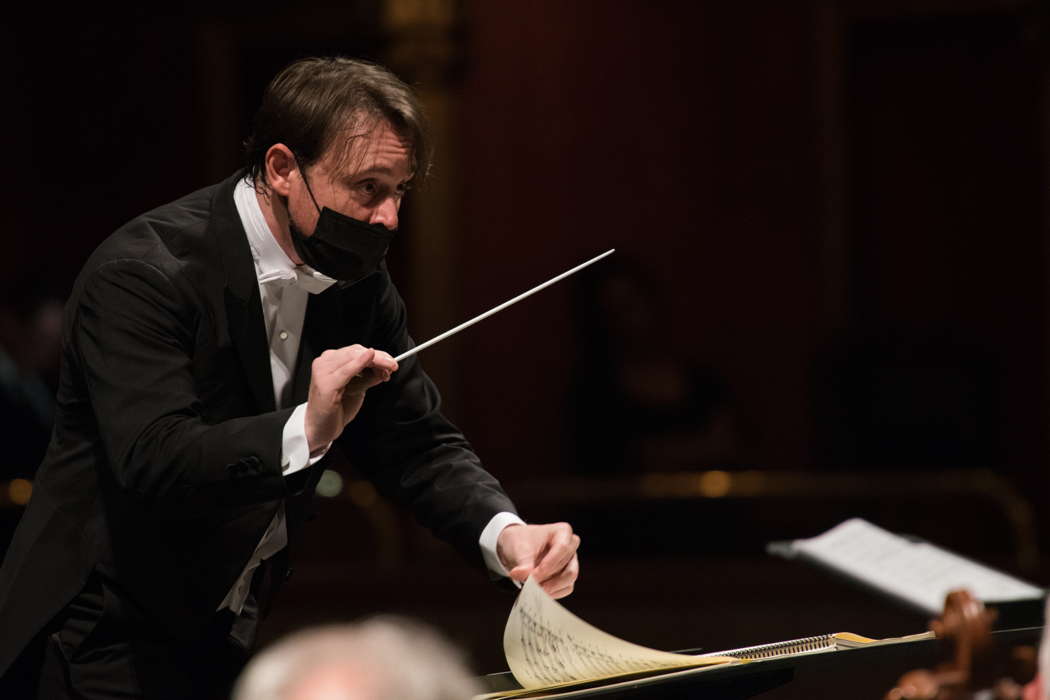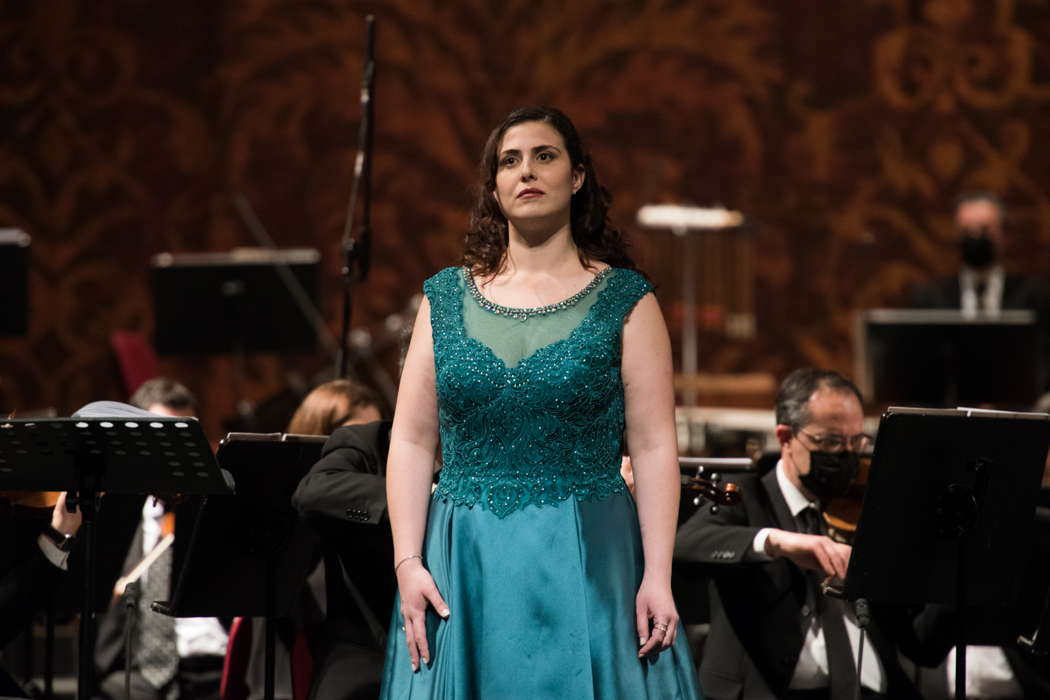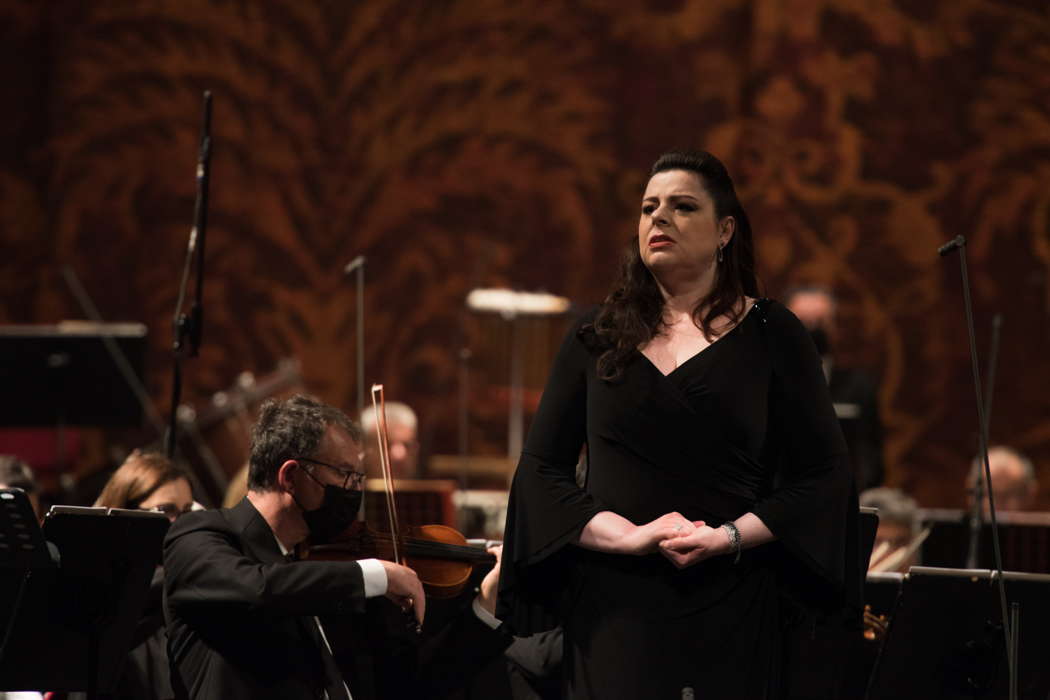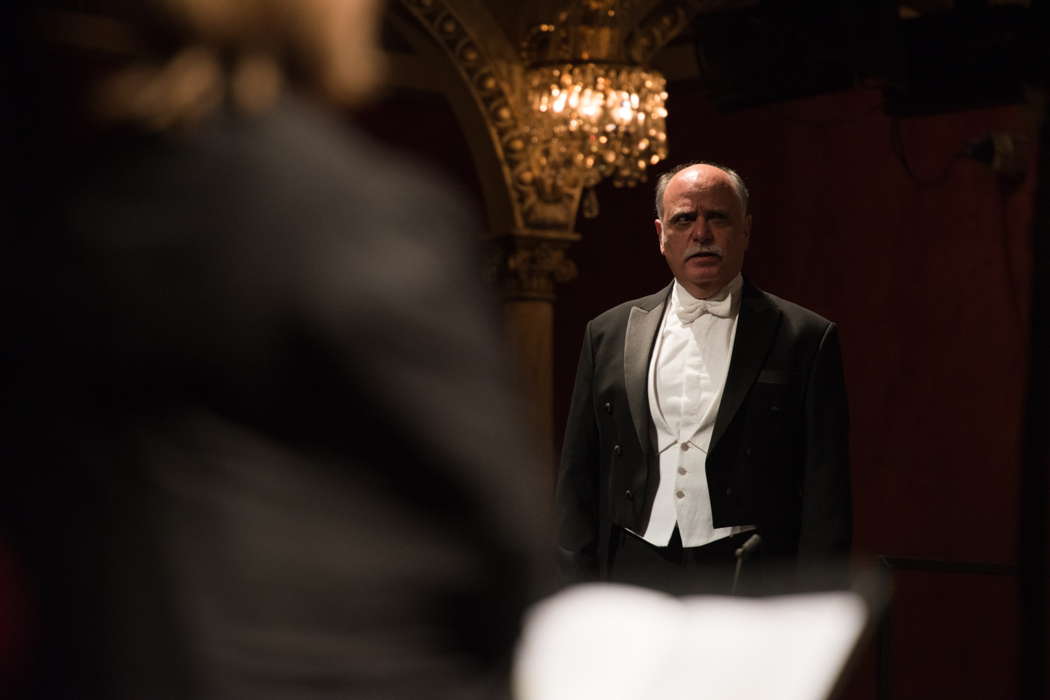- Tanzania
- Louise Bertin
- Charles Dibdin
- lute
- Universal Music Operations Ltd
- Eugen d'Albert
- Mozart: Violin Concerto No 4 in D
- Sally Pinkas
 DISCUSSION: What is a work? John Dante Prevedini leads a discussion about The performing artist as co-creator, including contributions from Halida Dinova, Yekaterina Lebedeva, Béla Hartmann, David Arditti and Stephen Francis Vasta.
DISCUSSION: What is a work? John Dante Prevedini leads a discussion about The performing artist as co-creator, including contributions from Halida Dinova, Yekaterina Lebedeva, Béla Hartmann, David Arditti and Stephen Francis Vasta.
 SPONSORED: Profile. A Gold Mine - Roderic Dunnett visits Birmingham to talk to John Joubert.
SPONSORED: Profile. A Gold Mine - Roderic Dunnett visits Birmingham to talk to John Joubert.
All sponsored features >>
A Conductor's Opera
GIUSEPPE PENNISI enjoys a streamed/televised production of Verdi's 'Luisa Miller' from Teatro dell'Opera di Roma
On 8 May 2021, Teatro dell'Opera di Roma unveiled a new production of Verdi's Luisa Miller in a concert version. Originally, the debut was scheduled for 21 April but it had to be postponed because some chorus members had positive COVID-19 tests. There was a mild hope to perform the opera with audience but as the curfew is still in force in Italy, it was necessary to have the performance shown on the operaroma.tv website. It could be seen and heard either streamed to a computer or to a regular television set via Youtube. I enjoyed a large screen and HD audio. It will be available for several months through the Teatro dell'Opera web site and Youtube.
Luisa Miller is not one of the most often performed Verdi operas. It was a commission by Naples Teatro San Carlo (where it had its debut in December 1849); it had good reviews and several revivals in Italy but in the latter part of the nineteenth century, it disappeared from the billboards and was almost forgotten for several decades. It was revived in Germany a few years before World War II and considered an important step towards Rigoletto.
It is based on Schiller's drama Kabale und Liebe (Intrigue and Love), later renamed Luisa Miller by Schiller himself. The plot revolves around a contrasted love affair between a village girl and the son of the Count landlord. It is a very complex plot, even though the action spans over only a couple of days; a set of complicated intrigues lead to a double suicide of the two lovers as well to the killing of the despicable bad guy. Schiller's play and Verdi's opera start with a fresh bucolic vision of the German countryside and move soon to gruesome scenes in the Count's castle. It is worth remembering that in Germany, Schiller's Kabale und Liebe was considered the manifesto of Romanticism as much as Hugo's Hermani in France.
Generally, Luisa Miller is thought to be a 'voices opera'. It is structured in musical numbers linked by recitatives and there are beautiful arias, duets and a final trio to provide a soprano assoluto - ie a soprano who can be both lyric and dramatic - plus an alto, a tenor, a bass and two baritones (one with a darker voice) the opportunity to prove their worth. Teatro dell'Opera lined up a sterling cast: Roberta Mantegna as Luisa, Daniela Barcellona as Federica, Antonio Poli as Rodolfo, Roberto Frontali as Luisa's father, Michele Pertusi as the Count and Marko Mimica as the evil Wurm - henchman of and bad advisor to the Count.
The main feature of the production is to demonstrate that Luisa Miller is a conductor's opera as well. Michele Mariotti is in the pit and conducts the excellent Teatro dell'Opera orchestra. He shows that the overture in C minor is not one of Verdi's ordinary introductions: a few minutes to quote some of the main tunes the audience will listen to later in the opera. Rather, it echoes the German symphonic modulations to provide the mood for the opera. There is a super dialogue between clarinet and strings as well as very tense moments for the woodwind and brass. It is a little self-contained masterpiece. The orchestral tapestry under the musical numbers connects them. Mariotti is rumoured to be Teatro dell'Opera di Roma's next musical director.

Michele Mariotti conducting Verdi's Luisa Miller at Teatro dell'Opera di Roma. Photo © 2021 Fabrizio Sansoni
Roberta Mantegna is very lyric in the first act entry aria (Lo vidi e 'l primo pulpito) as well in her exchanges with the chorus (prepared by Roberto Gabbiani) in the first scene of Act III. She turns highly dramatic in the prayer of Act II - Tu puniscimi, O' Signore - a remarkable number (in 1849) because of the lack of formal repetition. The duet with Antonio Poli, which evolves into a trio with Roberto Frontali at the tragic end of the opera, is, of course, very dramatic.

Roberta Mantegna in the title role of Verdi's Luisa Miller at Teatro dell'Opera di Roma. Photo © 2021 Fabrizio Sansoni
Daniela Barcellona has a short but intense part in Act I Scene 2: the duet - Dell'aule raggianti - followed by a cabaletta, Deh! La parola amara, with Antonio Poli. She showed her aristocratic and stern character.

Daniela Barcellona as Federica in Verdi's Luisa Miller at Teatro dell'Opera di Roma. Photo © 2021 Fabrizio Sansoni
Antonio Poli is a good lyric tenor who started his career with Riccardo Muti about ten years ago. He delivered the famous andante aria Quando le sere al placido in Act II - a war horse for Verdi tenors - very well, and was quite effective in all the other numbers.
Roberto Frontali was quite good from the initial cabaletta full of grief and rage - Ah! Fu giusto il mio sospetto - to the tragic trio at the conclusion of the opera.

Roberto Frontali as Miller, Luisa's father, in Verdi's Luisa Miller at Teatro dell'Opera di Roma. Photo © 2021 Fabrizio Sansoni
Marko Mimica as Wurm is as devious as possible. Finally, Michele Pertusi released the Count's confused paternal feelings in the romanza Il mio sangue, la vita darei and his double mind in the Act II narrative duet with Wurms.
Copyright © 10 May 2021
Giuseppe Pennisi,
Rome, Italy



